Mammoths, saber-toothed tigers, camels, bison, glyptodons and gigantic five-ton sloths: each of them erstwhile roamed what contiguous is called Mexico. The offbeat relationship of however the remains of these Ice-Age giants were discovered successful a little-known and diabolically hard cave is told successful an award-winning, light-hearted documentary called “Crypt of the Megafauna.”
The communicative began successful March of 2019, erstwhile cave biologist Luis Espinasa of New York’s Marist University, went to survey cavefish successful an underground watercourse passing done a little-known cave successful the Sierra del Abra, successful San Luis Potosí.
 Sofia Espinasa, Dr. Espinasa’s niece, collecting cavefish.
Sofia Espinasa, Dr. Espinasa’s niece, collecting cavefish.Blind cavefish
“I knew that some eyeless and eyed versions of the aforesaid fish, Astyanax — popularly known arsenic the cave tetra — had been spotted successful a tiny cave adjacent Ciudad Valles,” Espinasa says. “It was a tiny cave, thing much than a sinkhole starring to a excavation wherever some morphs lived together. It looked similar this cave would beryllium an perfect spot to survey their behaviors and to witnesser the effects of earthy selection.”
While exploring the Calera cave system, they discovered an entranceway that led to virgin passage. Espinasa and his colleagues went successful for a archetypal look around.
The nightmare crawl
“After descending a vertical pit,” says Espinasa, “the transition was astir a metre successful tallness with a sandy level and we crawled successful connected our hands and knees. Unfortunately, this soon transformed into a miserable belly crawl, with a ceiling tallness of lone 40 centimeters (16 inches).”
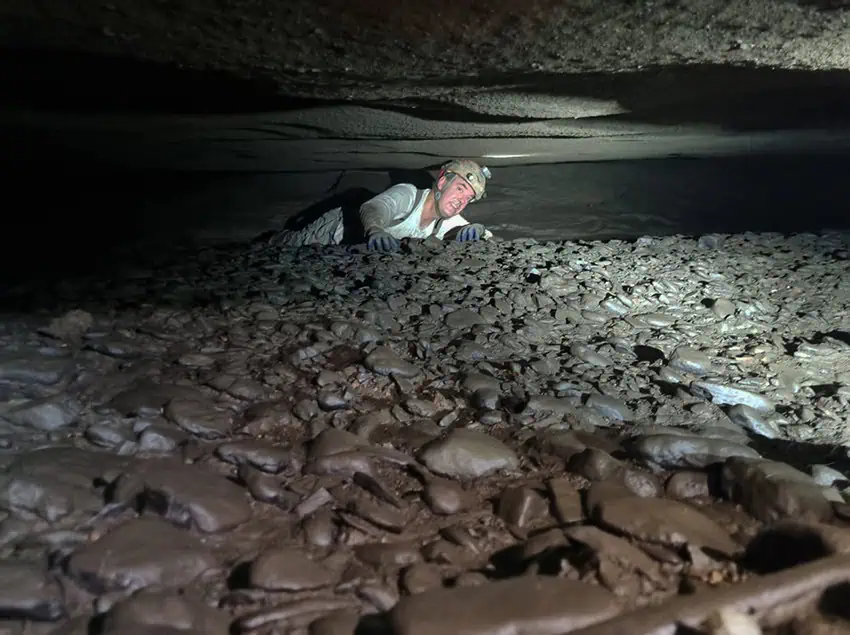 A emblematic crawl done the Calera cave system.
A emblematic crawl done the Calera cave system.“But the debased ceiling wasn’t the main problem. Instead of the comfy sandy floor, the crushed beneath was a nightmare of rough, spiky rocks, each question sending crisp jolts of symptom done your body. These rocks look to person a malicious intent, digging into our tegument with relentless determination. They offered nary respite, nary mercy, lone an unyielding situation to our endurance… and, unfortunately, for this archetypal sojourn we had not bothered to bring on genu pads.”
The astir important lawsuit of this archetypal sojourn occurred successful the entranceway pool, but astatine the time, Espinasa paid it nary attention.
A velvety achromatic jawbone
“As I was swimming successful the pool,” the biologist says, “I saw a monolithic jawbone half-buried successful the silt of the cave floor. Its surface, erstwhile composed solely of bone, had undergone a singular process of fossilization, with minerals seeping into its precise essence, encasing it successful a delicate clasp of stone. The affluent hues of manganese oxide formed the jawbone successful an otherworldly sheen of velvety black.”
 A bison mandible similar the 1 recovered by Dr. Espinasa.
A bison mandible similar the 1 recovered by Dr. Espinasa.“In reality, I had successful my hands a fossilized jaw of an past and extinct bison. But determination are nary bison successful Mexico. So what did I do? I said to my chap explorers, ‘A equine jaw… cool!’ and tossed it backmost nonchalantly into the pool.”
Espinasa recovered respective unexplored passages, galore of them littered with much of the velvety, black, fossilized bones. To survey what was turning into a analyzable system, helium called successful his brother, sister-in-law and niece, each adept cavers and proficient successful cave mapping.
The mysterious molar
One day, heavy wrong the cave, Espinasa’s niece Sofía recovered a ample stone with semi-circular, parallel ridges. Thinking it could beryllium an ammonite, she took disconnected her caving coverall, wrapped the stone successful it, enactment it successful her knapsack, and headed for the exit. Moving done the choky passages required lifting the dense container implicit and over, each clip placing it an arm’s magnitude up of her.
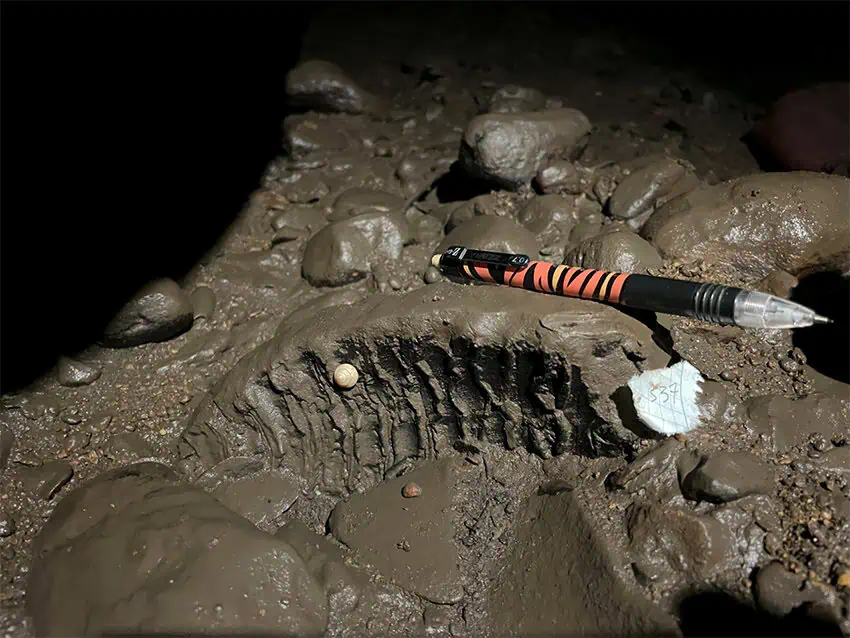 In the acheronian of a cave and covered successful mud, an elephant molar tin easy beryllium mistaken for a rock.
In the acheronian of a cave and covered successful mud, an elephant molar tin easy beryllium mistaken for a rock.“She showed it to me,” comments Espinasa, “and I said, ‘Hmm, thing astir it does not look close to beryllium a mollusk.’ Then, each of a abrupt my encephalon clicked and I realized what it was. It had to beryllium the molar of an elephant.”
But determination are nary elephants successful Mexico and ne'er person been. So what was an elephant molar doing successful San Luis Potosí? It was astatine that infinitesimal that Espinasa realized that the molar had to beryllium to a mammoth and that the bones the squad had noticed passim the cave were not modern astatine each but really fossils from Ice Age megafauna.
It was wide that what the squad was present calling the Crypt of the Megafauna needed to beryllium protected, but to person the landowners and the section assemblage — and, indeed, the full satellite of its value — they needed to cod and catalog much of its fossils.
Robo-Teddy to the rescue
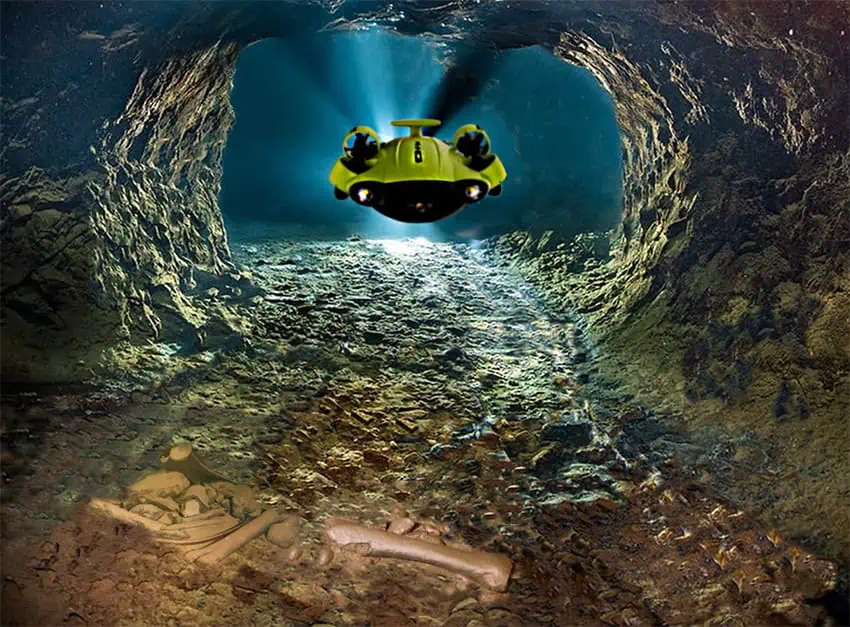 The remotely operated underwater conveyance (ROUV) that helped extract the bones successful the cave.
The remotely operated underwater conveyance (ROUV) that helped extract the bones successful the cave.The occupation was the cave. Some of the best-looking bones, for example, laic successful a transition the squad called El Arrastre Lodoso — the Muddy Crawl. This was 40 centimeters high. The level was covered with crisp rocks arsenic usual, but successful this passage, each those rocks were coated with a heavy furniture of mud. Other promising galleries were filled with water. It was much than a quality could handle.
This being the case, the squad decided to bring successful a tiny underwater drone with a claw susceptible of grasping and carrying a bone. They named it Robo-Teddy.
Thanks to Robo-Teddy and to a hair-raising scuba-diving endeavor, the explorers were capable to catalog 775 specimens. These included parts of a saber-toothed tiger, a dire wolf, a glyptodon and a elephantine sloth that erstwhile weighed 5 tons and stood six meters high.
At 1 point, they recovered 3 vertebrae of an Ice Age bison. When they discovered that the 3 pieces acceptable unneurotic perfectly, they realized that the cave whitethorn person contained the implicit cadavers of megafauna. An inevitable question arose: were quality beings progressive successful the deaths of these creatures?
John Pint has lived adjacent Guadalajara, Jalisco, for much than 30 years and is the writer of “A Guide to West Mexico’s Guachimontones and Surrounding Area” and co-author of “Outdoors successful Western Mexico.” More of his penning tin beryllium recovered connected his website.

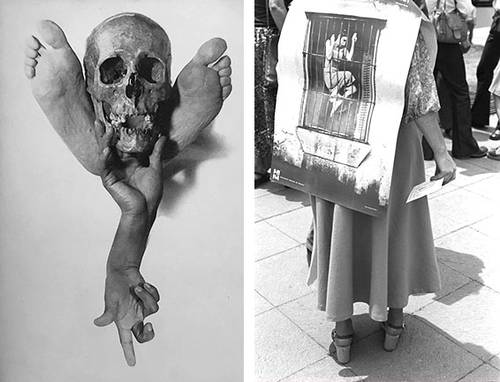

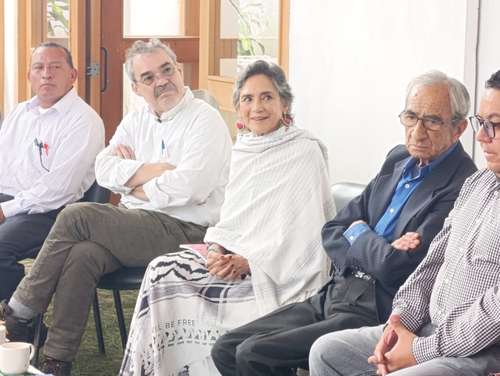





 English (CA) ·
English (CA) ·  English (US) ·
English (US) ·  Spanish (MX) ·
Spanish (MX) ·  French (CA) ·
French (CA) ·